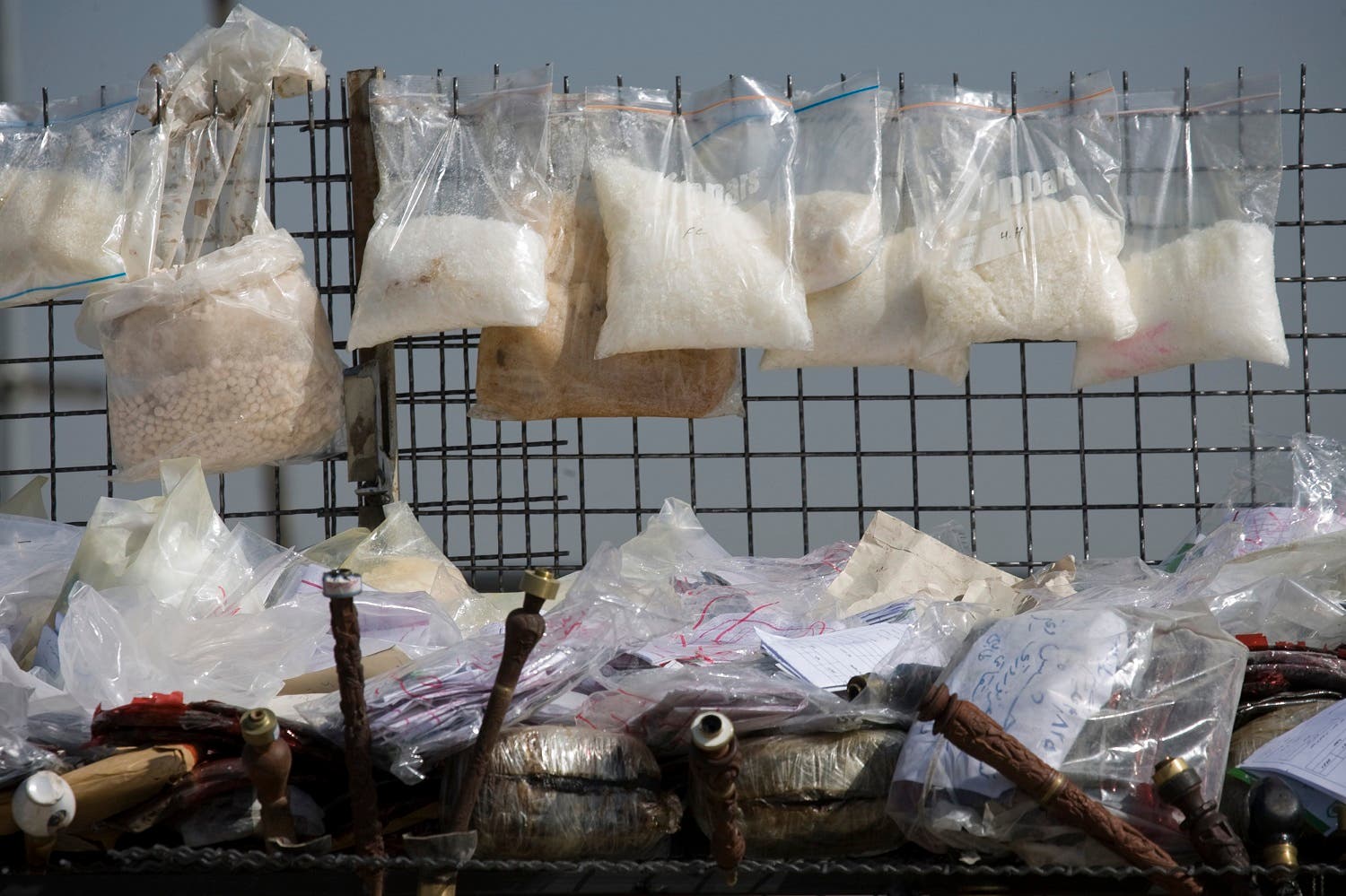With calls coming from many quarters for the Iranian Revolutionary Guard Corps (IRGC) to be blacklisted, there is one area of its illicit smuggling network that needs to be given careful consideration. With reports of the Guards being heavily involved in the drug trade, the implications could be far and wide, especially in the nations that the Iranian regime looks upon as enemies.
 |
| IRGC |
Over the years, the Iranian administration has utilized every form of illegal activity in its bid to break international sanctions, which had been imposed by the UN over its noncompliance to adhere to its international obligations over its clandestine nuclear program, and so with the international illicit drug market estimated at $320 billion annually, the IRGC decided to “dabble”.
Spearheading the implementation of a massive smuggling network, in their effort to lighten the burden of these sanctions, was the Qods Force; a branch of the IRGC, which acts as its overseas arm. The Qods Force is essentially an elite strike force, tasked with planning, setting up, and executing extraterritorial covert operations on behalf of the IRGC.
With sanctions against Iran’s nuclear program having been in place since 2006, it had crippled the country’s economy, which in turn had severely curtailed the expansion of its military, as well as its financial support for its proxy terror group Hezbollah. So with the regime always being in a fretful state of paranoia over outside threats, it was desperate to find away to bring in vast amounts of revenue in its effort to strengthen internal security.
One method that was decided upon to bring in this extra revenue came in the form of setting up a vast global drug smuggling network, which would be spearheaded by commanders of the Iranian Revolutionary Guard Corps, Qods Force.
With the Qods Force already said to be heavily involved in the training and arming of some of the world’s most dangerous terror groups, whose networks encompass much of the planet, having it involved with major drug trafficking gangs, will have long-term significant strategic implications for all of the Iranian regime’s perceived enemies.
Heroin addicts
The IRGC realizes the effect that the drugs trade can have on a country, as Iranian society is plagued with one of the world’s highest proportion of heroin addicts. The Guards know that by using illegal drugs as a tool, turning it into a plague amongst its enemies, it can slaughter more youngsters than it possibly could on the battlefield.
Plus, with an army of gang bangers and desperate drug addicts at its disposal, should hostilities break out between Iran and the West, the IRGC would be able to saturate any enemy nation, with a terrorist army of brainwashed, desperate individuals that could strike at any given target.
Also, by mixing the violent urban warfare tactics of a terror group, with the criminal tactics of an organized crime gang, which include accessing government departments and police forces by bribery and threats, both groups would not only advance their political goals, they would also have a conduit with which to maximise their criminal gains.
Over the years, through various sources within the Iranian regime, US government agencies have been able to identify various IRGC commanders involved in this trade. One of these commanders was identified as Abdullah Araqi, the Revolutionary Guard’s Tehran District Commander, who was suspected of colluding with members of the eastern European underworld, in a bid to set up a drug smuggling network.

Drugs are prepared for burning during a ceremony in southern Tehran, March 9, 2009. (Reuters)
While another prominent commander who came under the spotlight, Brig. Gen. Gholamreza Baghdani, the commanding officer of the Qods Force Ansar Corps, was implicated by the US Department of Treasury, in having made deals with Afghani heroin smugglers to direct vast amounts of heroin to the West.
Coordinating the shipments of drugs throughout his unit’s field of operation in the Sistan and Balochistan provinces, Baghdani insured it moved safely along the borders of Afghanistan and Pakistan, and in return, the drug traffickers transported weapons to the Taliban on behalf of Baghdani.
According to a CIA report, the Guards were using planes and ships to transport illicit drugs to Albania, Romania and Bulgaria. As far as the Albanian mobsters are concerned, they have certainly become successful in the hierarchy of global mafias in the realms of the drugs industry.
Being aligned with the Taliban, they have been able to procure the best possible deals from Afghani and Pakistani heroin growers, and with Eastern smuggling groups relying on the “Balkan Route” to transport their product to Europe, ex-members of the Kosovo Liberation Army (KLA), and affiliated groups, have managed to knock the Turks off the pedestal as top dogs in the area’s drug trade, through their policing of the route.
Hezbollah and Albanian mafia
The Albanian mafia operates a top class smuggling operation; they have connections to both Hezbollah, and many of the leaders that are presently in charge of the Islamic State, who were in the days of the Yugoslavian conflict affiliated to al-Qaeda.
At that time, the Albanian Kosovo Liberation Army, fought side by side with both Hezbollah and al-Qaeda in the Bosnian conflict, a comradeship which would become useful to the Qods, should it want to set up an active sleeper cell in countries where the Albanian mobsters operate? Being highly active in Europe, North America, South America, and various parts of the world, which includes the Middle East and Asia, the Albanians could become a great asset to the Qods Force.
Prone to extreme violence, many former members of the Kosovo Liberation Army now work as foot soldiers for the Albanian mafia, protecting it against its rivals. The KLA’s roots had stemmed from the disputed state of Kosovo, where it had become a prominent guerrilla force, fighting for independence during the Bosnian conflict of the early Nineties, and has now become one of the highest crime generating entities in the world.
With somewhere in the region of 60 tons of heroin, worth an estimated $13 billion, most of which has to be transported to buyers in Western and Central Europe via the Albanian mobster’s Balkan Route, the illegal drugs industry has generated vast sums of money for the gang.
With this industry having created much corruption in all levels of government, and with transnational organised crime playing a major role in many areas of Balkan society, bankrolling many prominent people, it has proved to be an impossible task to crack down on the trade, and has made it the perfect route for the Qods to shift their drugs through.
With the backing of the Qods Force, its proxy Hezbollah is now firmly entrenched in Mexico and South America, where it runs a well-established drugs empire. Through Hezbollah’s vast network, the Albanian’s have been able to forge links with Latin America’s most powerful drugs barons, and by swapping heroin for cocaine, it’s turned them into one of Europe’s main sources for coke, and made a fortune for the Qods and Hezbollah.
But it’s not so much their power in the drug smuggling hierarchy that’s so worrying, with Hezbollah exploiting its close relationship with former KLA leaders, the terror group is suspected of shipping in arms for Hezbollah’s vast complex of sleeper cells across Europe, as well as bringing in technical operatives through the gang’s people smuggling pipeline.
The KLA run a highly sophisticated smuggling set-up, providing jihadi cell members with stolen passports, and fraudulent visas, as well as all other essential logistics needed for their planned jihad, including safe-houses anywhere within the target country.
Last Update: Friday, 2 June 2017 KSA 09:23 - GMT 06:23
